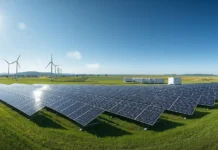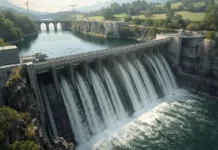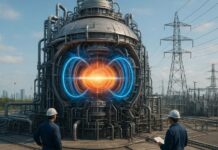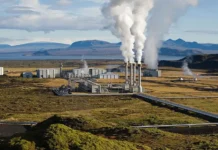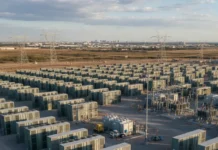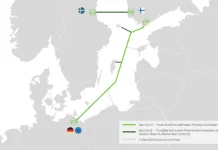Energy and AI: The Power Couple That Could Usher in a Net-Zero World
In an age characterized by the double imperative of technological progress and ecological sustainability, the convergence of energy and AI has come to represent a formidable synergy. The interaction between these two industries possesses the potential to transform global energy systems, turbocharge the transition toward a net-zero future. As climate change finds its way to the forefront of geopolitics and economic priorities, AI integration into energy infrastructure ceases to be optional and becomes necessary. This convergence has the potential to redefine energy generation, transmission, and use.
AI’s Role in Reshaping the Energy Sector
Artificial intelligence has emerged as an essential asset in enhancing energy production and management. AI significantly enhances grid stability and minimises wastage, delivering a transformative effect throughout the energy landscape. Through the application of sophisticated machine learning and predictive analytics, artificial intelligence can enhance energy efficiency and create economic benefits. AI-driven energy efficiency measures have the potential to generate as much as $1.3 trillion in economic value by 2030.
Energy grids, frequently challenged by the variability of renewable sources such as solar and wind, are progressively reaping the rewards of AI applications. AI enhances the stability of these grids by forecasting variations in power generation and consumption. These predictive abilities allow energy providers to distribute resources more efficiently, guaranteeing steady and dependable energy supplies.
Another important use of AI is in predictive maintenance, where sophisticated algorithms detect potential problems in energy infrastructure before they develop into expensive failures. This not only boosts reliability but also plays a crucial role in the sustainability of energy systems, minimising unnecessary energy consumption and emissions.
Driving Decarbonization Through AI
AI’s contribution to decarbonisation efforts is huge. According to studies, artificial intelligence (AI) might reduce global greenhouse gas (GHG) emissions by 5-10%, which is similar to the European Union’s total annual emissions. These savings are achieved through AI’s ability to optimise renewable energy integration, effective energy storage, and better consumption models.
Furthermore, AI enables the creation of microgrids and decentralised energy systems, which play an important role in reducing dependency on fossil fuels. AI facilitates the successful integration of renewable energy sources, allowing for a smoother transition to a low-carbon energy landscape. This not only satisfies climate goals, but also promotes global energy independence and security.
The Challenge of AI’s Energy Footprint
While AI has enormous potential to improve the energy sector, it also brings its own set of challenges, including excessive energy usage. AI-driven operations require considerably more power than typical digital services. A single AI query, such as one conducted with ChatGPT, uses ten times the energy of a regular Google search.
By 2030, electricity usage for AI technology is predicted to increase by a ratio of 3.6, reaching more than 1,000 terawatt-hours per year—nearly a fourth of the US’ present energy demand. The combined problem of regulating AI’s energy footprint while lowering overall emissions highlights the complexities of this power duo.
To achieve harmony between AI and energy systems, creative solutions are required. Energy companies must use AI not only to improve their own operations, but also to migrate to cleaner energy sources. For example, using AI for demand optimisation and grid resilience can increase energy efficiency by 10% while lowering operational costs by up to 15%, assuring sustainability while meeting rising power demand.
Abu Dhabi’s Pioneering Role
Abu Dhabi is in the forefront of integrating AI into the energy sector, demonstrating the revolutionary power of this collaboration. The Abu Dhabi National Oil Company (ADNOC) is using artificial intelligence (AI) to improve efficiency, reduce carbon emissions, and promote social value. In 2023 alone, ADNOC’s AI initiatives saved $500 million and decreased carbon emissions by one million tonnes, the equivalent of removing 200,000 gasoline-powered automobiles from the road.
The emirate’s significant investments in AI-powered digital infrastructure are enabling data-driven automation across all energy processes. From predictive analytics in energy production to real-time decision-making in boardrooms, ADNOC illustrates how artificial intelligence can drive prosperity while maintaining sustainability.
Bridging the Energy Transition
Global sustainability measures must include the energy transition, but recent years have seen little progress in this area. With 81% of the energy system still depending on fossil fuels, two-thirds of global emissions are caused by energy production and consumption. There is a clear need for change, and artificial intelligence (AI) has the potential to be the spark that speeds up this process.
Tools for benchmarking, such as the Energy Transition Index, draw attention to the potential and difficulties in reaching net-zero objectives. The incorporation of AI into energy systems may help close preparedness gaps, especially in high-emission nations like the US, China, and India. AI’s potential to propel a greener, more equitable energy future will only be realised with the help of effective regulations and public-private collaborations.
The Path Forward
AI and the future of energy are inextricably intertwined, with each industry improving the capabilities of the other. But this route necessitates international cooperation between innovators, legislators, and business executives. We can only solve the issues raised by AI’s energy requirements and optimise its potential to promote sustainability by working together.
Energy and AI need to work together as a power pair. When combined, they can improve energy efficiency, lower emissions, and facilitate the switch to renewable energy sources. We can promote environmental stewardship and technology innovation by successfully combining these domains.
Conclusion
The collaboration between energy and AI is set to emerge as a pivotal connection in the pursuit of a net-zero future. Through the enhancement of efficiencies, the promotion of decarbonisation, and the facilitation of a sustainable energy transition, AI is revolutionising the production, management, and consumption of energy.
With the rise of global collaboration and ongoing technological advancements, the energy sector, driven by AI, is poised to unlock a cleaner, greener, and more equitable future. The path to achieving net-zero is fraught with obstacles; however, with the guidance of energy and AI, this future is attainable.


